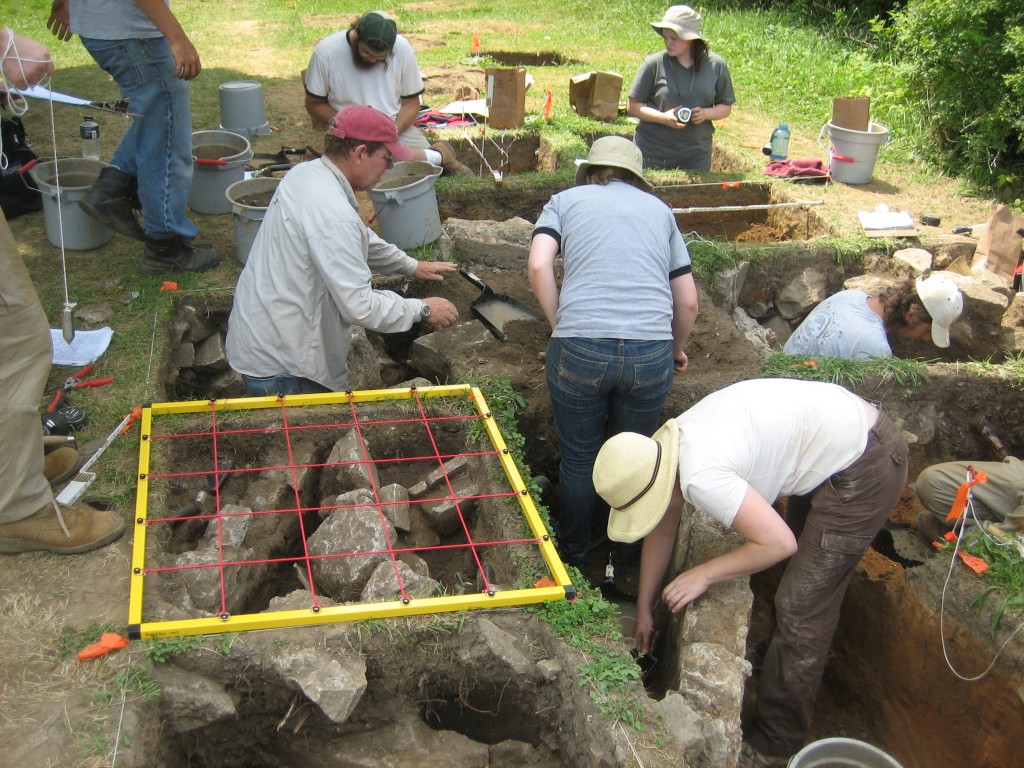Overview
From 2009 to 2011, the Archaeology of Labor and Immigration Project at the University of Maryland led by Stephen Brighton conducted three archaeological field schools in the small quarry town of Texas in Baltimore County, Maryland, a source for lime as well as marble used in notable buildings such as the Washington Monument and the Capitol. The goal of the research project was to better understand the lives of the mainly Irish workers and their families who quarried and burned this stone. Two sites were tested archaeologically and yielded over a hundred thousand artifacts and forty features, ranging from stone-lined privies and an icehouse to trash pits. The artifacts recovered and analyzed include a mix of nineteenth and twentieth-century material culture from plates and bowls to smoking pipes and religious medals. When combined with the data from earlier contract excavations in Texas, the material record has provided a rich picture of everyday life in Texas, Maryland, from the 1840s till the 1980s.
Learn more on the project website
Location
Texas, Baltimore County, Maryland
Project Team
Associate Professor Stephen Brighton joined the Department of Anthropology at the University of Maryland, College Park in 2005, and organizes an archaeological field school each summer in rural Ireland. He completed a B.A. in Anthropology at Montclair State University, New Jersey, in 1992, and received his Ph.D. from Boston University in 2005. Dr. Brighton’s research areas include northeast North America, Ireland, and the Scottish highlands, with specializations in anthropologically based approaches to the archaeology of diaspora, colonialism, the emergence and influence of capitalism and urbanization, immigration history, social identity (i.e., race, class, ethnicity, gender, and age) and heritage formation and nationalism, material culture studies, vernacular architecture, and contemporary theory in archaeology.
Adam Fracchia earned his Ph.D. in anthropology from the University of Maryland, College Park, in 2014. Using the material and spatial record, his dissertation examined the impact of industry on the everyday life of workers and their families in the small quarry town of Texas in Baltimore County, Maryland, during the nineteenth and twentieth centuries. He currently works as an archaeologist with the Cultural Resources Planning Division at the Maryland State Highway Administration.
Partners
- Center for Heritage Resource Studies, University of Maryland, College Park

